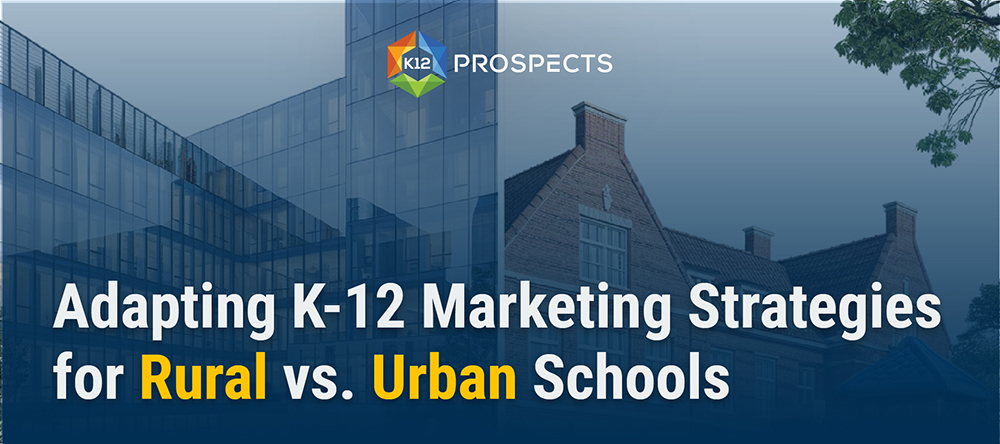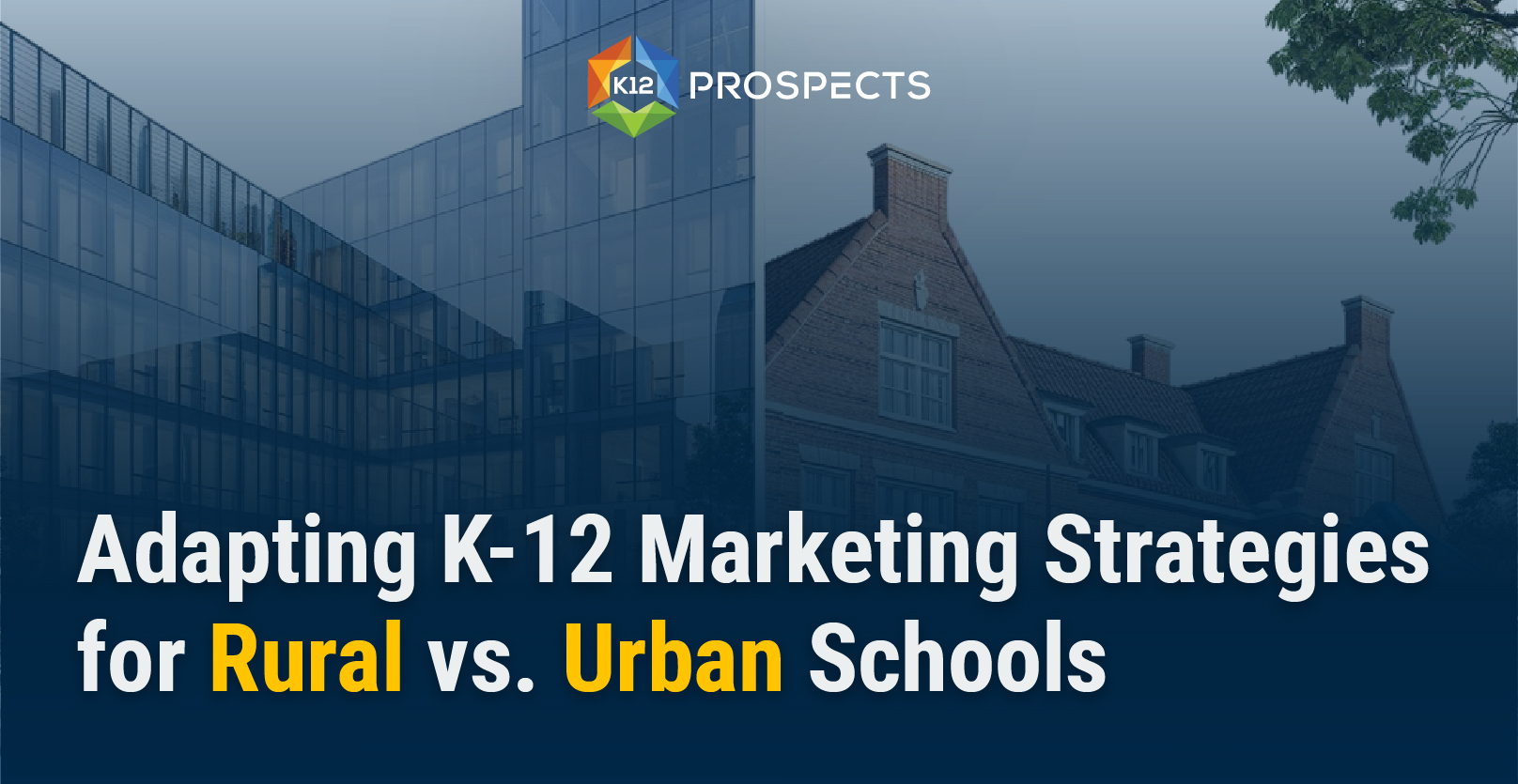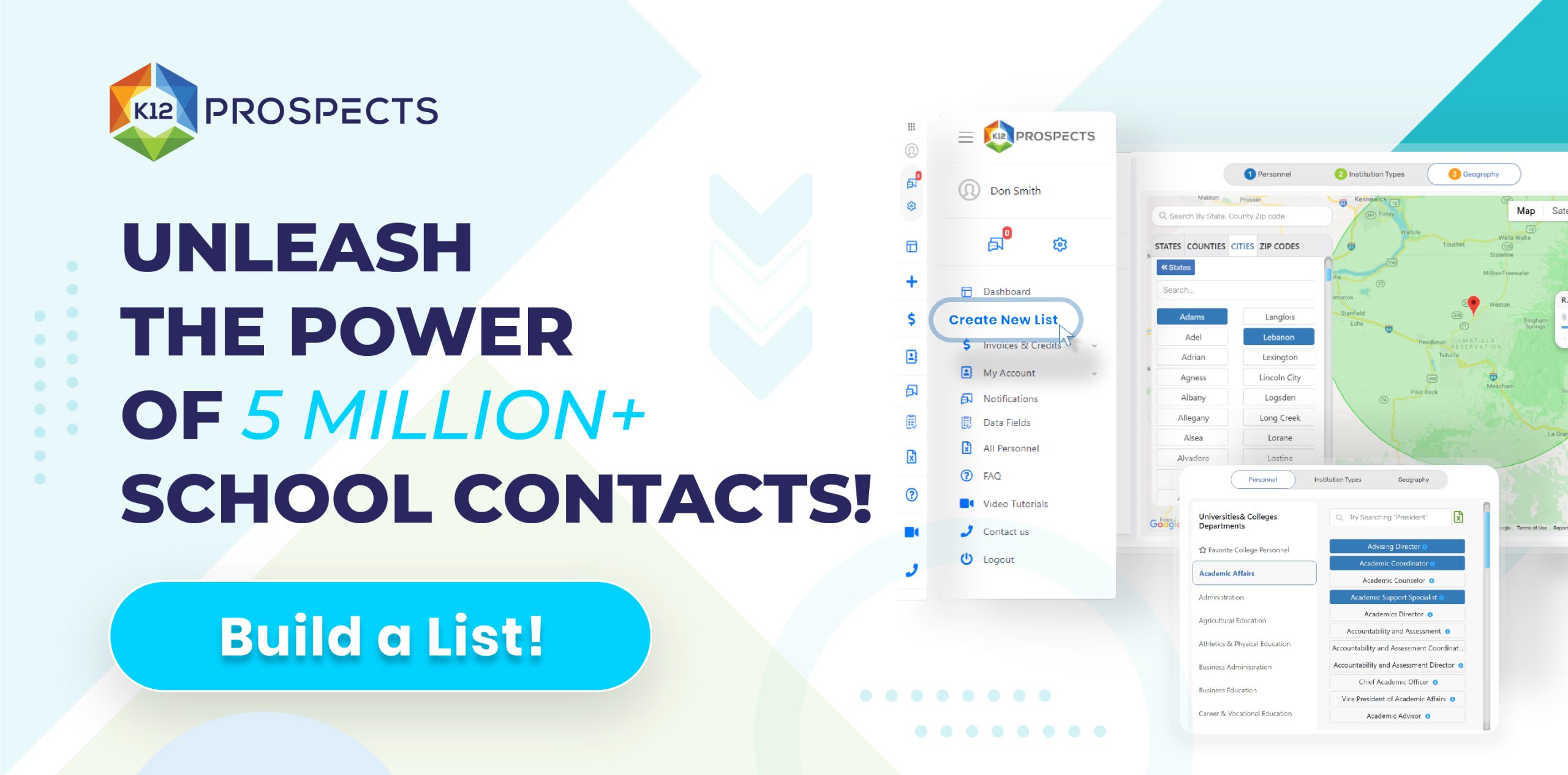Adapting K-12 Marketing Strategies for Rural vs. Urban Schools

When it comes to marketing educational products and services to school districts, understanding the differences between rural and urban schools is essential. Both areas have unique needs, budgets, and challenges, which can impact how your product or service is received. Tailoring your marketing approach to meet these distinct needs can make a world of difference in building relationships and generating sales. In this article, we’ll explore the pros and cons of marketing to rural vs. urban schools, with specific examples and strategies to help your business succeed.
Understanding Rural and Urban School Districts
Rural Schools
Rural schools are often smaller, serve fewer students, and are typically spread out across large geographic areas. They may struggle with limited resources, both financially and technologically, and often lack immediate access to the latest educational tools and services. However, they tend to have close-knit communities, allowing companies to build long-term relationships and a loyal customer base if they provide solutions that meet the school’s needs.
Urban Schools
Urban schools, by contrast, are generally larger and located in densely populated areas. They often have access to more funding and resources but may face challenges like overcrowding and higher staff turnover rates. Urban districts are usually more open to adopting new technologies and solutions due to a more flexible budget and greater student demand. However, navigating the complex administrative structures in these schools can sometimes slow down the decision-making process.
Marketing to Rural Schools: Pros, Cons, and Strategies
Pros of Marketing to Rural Schools:
- Close-Knit Communities: Rural schools are often central to their communities, making it easier for businesses to establish relationships based on trust and personal connection.
- Less Competition: Fewer companies specifically target rural areas, so your business may have an edge in reaching schools that lack similar offerings.
- Flexibility in Customization: Rural schools may be more open to customized solutions, given that their needs can be unique and specific.
Cons of Marketing to Rural Schools:
- Limited Budgets: Many rural districts operate on tight budgets, which can restrict the purchasing power for new products or services.
- Technology Constraints: Rural schools may face technological limitations, such as unreliable internet connections, which can impact the integration of digital solutions.
- Slower Decision-Making: With smaller administrative teams, rural schools might have longer approval processes, as decisions often involve multiple stakeholders.
Example Strategy for Marketing to Rural Schools:
Suppose you’re offering an online learning platform. A targeted email campaign that addresses common issues in rural schools—such as limited access to specialized teachers or resources—could resonate well. You might emphasize how your platform offers high-quality, remote learning opportunities, addressing the limitations of rural locations. Highlighting cost-effective options or payment plans could make the product more attractive to budget-conscious decision-makers.
Marketing to Urban Schools: Pros, Cons, and Strategies
Pros of Marketing to Urban Schools:
- Larger Budgets: Urban districts often have more funding and may be more willing to invest in new solutions.
- Higher Volume of Students: With more students, urban schools represent a larger potential customer base, which could mean higher returns on your investment.
- Greater Technological Access: Urban schools are typically better equipped with modern technology, enabling smoother integration of digital products and services.
Cons of Marketing to Urban Schools:
- High Competition: Many companies focus on urban schools, so standing out among competitors can be challenging.
- Complex Bureaucracy: Urban districts often have more administrative layers, which can slow down decision-making and purchasing processes.
- More Diverse Needs: The diversity in urban schools, with varying languages, cultures, and income levels, may require more complex customization to appeal broadly.
Example Strategy for Marketing to Urban Schools:
If your company provides classroom management software, an email campaign to urban schools could focus on the platform’s ability to streamline operations in large, diverse classrooms. Emphasize features that allow teachers to manage high volumes of students and differentiate instruction. Case studies or testimonials from other urban districts can add credibility and relevance. Offering a free demo might also help break through competitive barriers, giving administrators a low-risk way to explore your product.
Pros and Cons of Both Areas: A Comparative Summary
| Factor | Rural Schools | Urban Schools |
| Budget | Limited, often stricter | Larger, more flexible |
| Decision-Making Speed | Slower, with close-knit stakeholders | Slower, but due to complex bureaucracy |
| Competition | Less competitive | High competition from other companies |
| Technological Resources | Limited access | Advanced and more accessible |
| Customization Needs | Unique, community-focused needs | Broad and diverse, often complex |
Using K12 Prospects’ Data to Reach the Right Decision-Makers
Data-driven marketing is crucial in tailoring campaigns to different school districts effectively. With K12 Prospects’ extensive data, including email lists of superintendents, principals, and other decision-makers, companies can create highly targeted marketing strategies for rural and urban districts alike. Here’s how our data can help you achieve the goals outlined above.
- Segmented Campaigns Based on Location
K12 Prospects’ data enables you to filter contacts by geographic location, allowing you to create distinct campaigns for rural and urban districts. You can craft specific messaging that resonates with the unique needs of each type of school. For example, targeting rural district administrators with budget-friendly options and highlighting customizability can increase engagement, while emphasizing scalability and advanced features for urban schools may capture the attention of urban district leaders. - Reaching Key Decision-Makers
Our lists include contacts at various administrative levels, ensuring your message reaches the right person. Superintendents in rural districts may be more receptive to a personal approach that emphasizes community impact, while urban principals may be drawn to data-backed solutions that demonstrate potential for managing large, diverse student populations. - Data-Driven Insights for Continuous Improvement
By analyzing response rates and feedback from different campaigns, you can continuously improve your marketing strategies. K12 Prospects provides you with updated contact information, helping you stay current with shifting roles and maintain your relationships. Adjusting your campaigns based on real-time insights can refine your approach and improve results in both rural and urban settings. - Targeted Follow-Up Strategies
Follow-up emails can be tailored based on the specific challenges faced by rural or urban districts. For instance, you might send rural schools a case study on how a similar district benefitted from your service or product, while urban districts might appreciate an ROI analysis of your solution in another large district. With K12 Prospects’ data, personalizing follow-ups becomes efficient and impactful.



